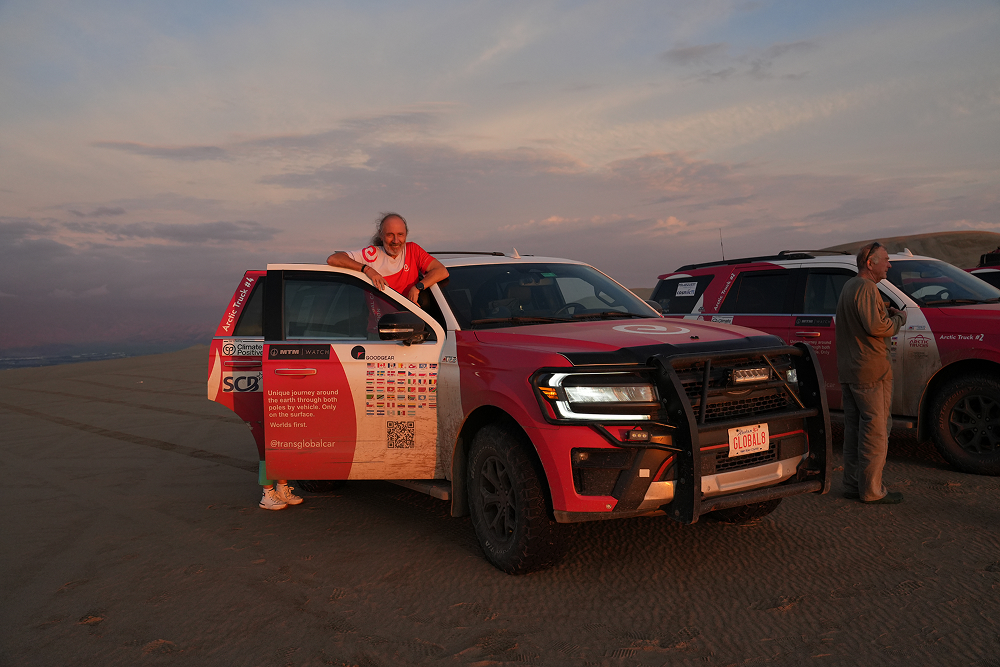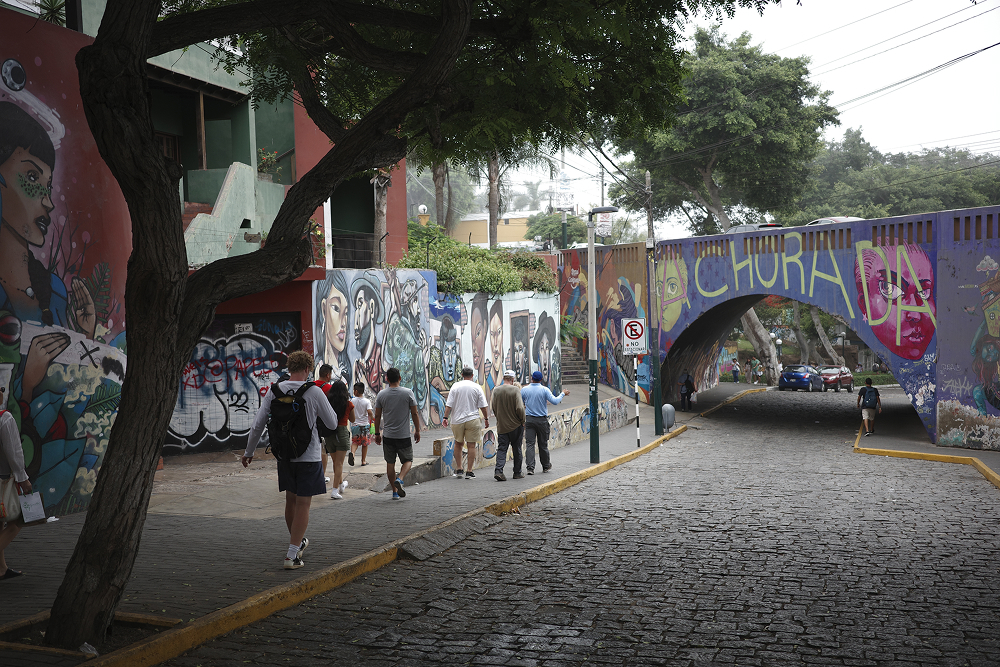On day 402, we were to cross the final pass of the Andes and reach the Pacific coastline. Our destination today was the coastal town of Paracas, a small port town focused on tourism.
The morning temperature was 7 degrees Celsius, accompanied by heavy rain that had caused flooding in the area in recent days. Thus, our start was filled with uncertainty: we weren’t sure if we would be able to make it through or not. We spent three challenging hours navigating a serpentine road filled with trucks and landslides. After another three hours, we reached the plains, immediately encountering a flooded road with stranded heavy trucks and a bogged-down bus in the sand. But we finally made it past the last of the Andes. We then visited the site showcasing the ancient Nazca Lines — gigantic preserved images of animals etched into the desert.
Next, we faced a low mountain range and, soon after crossing it, entered an area with dense traffic. As evening approached, we arrived in the city of Ica and enjoyed dune buggy rides, a local attraction.
We arrived in Paracas after dark, but still managed to dip our toes into the Pacific Ocean. We covered a total of 408 km for the day.
On day 403, we set our goal to reach the capital of Peru, Lima. At the start, we visited the ocean shore, snapping a few photos, and then headed to Pachacamac, a town known for its ancient temple and archaeological significance in local culture.
For the latter part of our journey, we drove under very low cloud cover, a result of the ocean’s proximity. These clouds dissipate just a few kilometers inland. Eventually, we arrived in Lima. The traffic there is incredibly chaotic, with some of the worst congestion on the continent.
We covered a distance of 322 km that day.
Day 404 was our rest day. Some members of the team were sleeping, while others were exploring Lima. This week was probably the most challenging part of our expedition on the continent.
The morning temperature was 7 degrees Celsius, accompanied by heavy rain that had caused flooding in the area in recent days. Thus, our start was filled with uncertainty: we weren’t sure if we would be able to make it through or not. We spent three challenging hours navigating a serpentine road filled with trucks and landslides. After another three hours, we reached the plains, immediately encountering a flooded road with stranded heavy trucks and a bogged-down bus in the sand. But we finally made it past the last of the Andes. We then visited the site showcasing the ancient Nazca Lines — gigantic preserved images of animals etched into the desert.
Next, we faced a low mountain range and, soon after crossing it, entered an area with dense traffic. As evening approached, we arrived in the city of Ica and enjoyed dune buggy rides, a local attraction.
We arrived in Paracas after dark, but still managed to dip our toes into the Pacific Ocean. We covered a total of 408 km for the day.
On day 403, we set our goal to reach the capital of Peru, Lima. At the start, we visited the ocean shore, snapping a few photos, and then headed to Pachacamac, a town known for its ancient temple and archaeological significance in local culture.
For the latter part of our journey, we drove under very low cloud cover, a result of the ocean’s proximity. These clouds dissipate just a few kilometers inland. Eventually, we arrived in Lima. The traffic there is incredibly chaotic, with some of the worst congestion on the continent.
We covered a distance of 322 km that day.
Day 404 was our rest day. Some members of the team were sleeping, while others were exploring Lima. This week was probably the most challenging part of our expedition on the continent.





